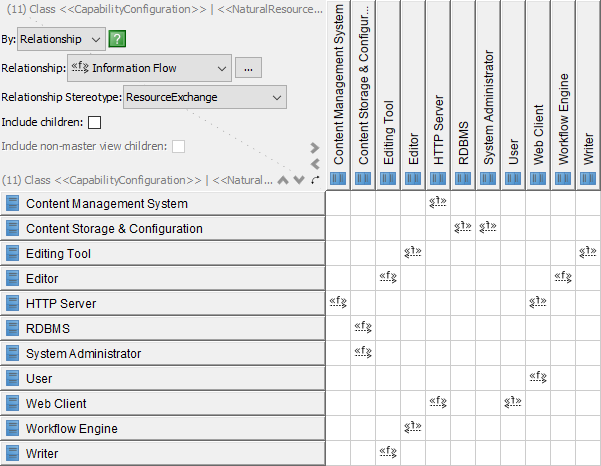The SV-3 provides a summary of the resource interactions specified in the SV-1, Resource Interaction Specification.
An SV-3 allows a quick overview of all the resource interactions specified in one or more SV-1 diagrams. The matrix format supports a rapid assessment of potential commonalities and redundancies or, if fault-tolerance is desired, the lack of redundancies.
The SV-3 can be organised in a number of ways to emphasise the association of groups of system pairs in context with the architecture’s purpose.
Usage
The intended usage of the SV-3 includes:
- Summarising resource interactions.
- Interface management.
Product Description
The SV-3 summarises the resource interactions depicted in the SV-1.
Depending upon the purpose of the architecture, there could be several SV-3 products. The suite of SV-3 products can be organised in a number of ways (e.g. by domain, by operational mission phase or by solution option) to emphasise the association of groups of resource pairs in context with the architecture’s purpose.
SV-3 is represented with a matrix, where the resources are listed in the rows and columns of the matrix and each cell indicates an interaction between resources if one exists.
Creating a Resource Interaction Matrix
To open the Resource Interaction Matrix:
- Click on Resource Interaction Matrix in the Action Artifact area.
- View the relationships between resources listed in the rows and columns. The cells indicate an interaction between resources if one exists

MODAF in Visual Paradigm
The MODAF is brought to you by Visual Paradigm, a full-featured development platform. Visual Paradigm provides an easy-to-use, model-driven MODAF tool that supports the development of MODAF views and models. You can create integrated MODAF products and generate architectural documents that facilitate organizations to efficiently coordinate enterprise architecture initiatives.